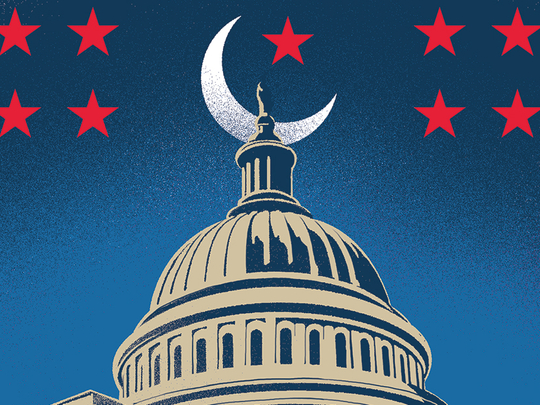
The need to address the issue of Islamophobia is pressing, given the fact that anti-Muslim bigotry, as was shown at the deliberations of the Global Peace and the Fear of Islam forum in Abu Dhabi last month, is now overt, malign and pernicious in its manifestations in the Euro-American world.
Islamophobia is not a new term, having initially emerged as a neologism in the middle of the 20th century, and later gained currency in the public debate around 1997, when the Runnymede Trust, a British race-equality think tank, released its report on British Muslims, claiming that the problem of anti-Muslim prejudice was a “challenge for us all”, since it has grown considerably and rapidly in our time.
Indeed it has done so, and in the United States, where hostility towards Arabs and other Muslims has not only been openly promoted by pundits in the right-wing media, but also by virulent Islamophobic foundations, misinformed commentators, misinformation experts with racist agendas and by religious fundamentalists and their allies in politics — all working in tandem to demonise immigrants from Muslim countries. And demonising Muslims is not, in today’s America, confined to stigmatising them.
According to FBI data, hate crimes directed at this minority — including assaults against Muslim cultural and religious representations, such as mosques and community centres — have ranked as the most common form of racially-motivated acts of bigotry reported in the US since 2001. Add to that a multi-tier confection of hate, suspicion and ostracism heaped on you if you are seen wearing a Muslim garb in public or “look Middle Eastern”. And, lest we forget, divisive talk about “radical Islamic terror” on the campaign trail in 2016 did not help.
Consider, as a case in point, the ongoing campaign to “ban Sharia in the US”, which began in earnest across the country after 2010, in the wake of the furore over the plan to build a community centre in downtown Manhattan, a campaign that later morphed into a concerted network, much in the manner of a political movement, pushing for “anti-Sharia” bills in state legislatures. In 2017, 23 bills were introduced in 18 states, bringing the total, since 2010, to 217 in 43 states.
And these Islamophobic activists proliferate not just in every state capital in America, but in the nation’s capital as well. Recall how, soon after Donald Trump arrived to Washington in January last year to take office as US President, several of the key aides he chose to join him at the White House were rabid Islamophobes, like Michael Flynn, the now indicted national security adviser, who called Islam a “cult” and a “cancer that must be excised”, and Steve Bannon, the president’s chief strategist, who had once warned, in a script for a documentary, that the US was in danger of becoming the “Islamic States of America”.
Why do Americans want to go with that racist flow, as millions of them appear to be doing as we speak? The irony thickens when we discover that the US, a nation of immigrants, has in fact always evinced a nativist posture when it came to receiving its newly-arrived immigrants. Always. No exceptions made.
Take the Irish, who began arriving in massive waves in the 1840s in order to escape the potato famine that bedevilled their country at the time — arriving destitute, hungry and miserable, already saddled with a handicap that made them easy prey for nativist bigots: they were Roman Catholic.
These new arrivals were stigmatised and subjected to extreme forms of “hibernophobia” — the persecution of, discrimination against and hatred of Irish people wherever they lived, worked and worshiped. Irish Americans were so reviled, that when the one million member-strong Know-Nothing Party sprang up in the late 1850s, it did so from the a populist movement of poor, working class white Americans intent on “preserving America’s culture” by restricting immigration from Catholic countries, especially Ireland. In later years, Jews fared no better. Nor did Italians, Poles, Germans, Chinese, Greeks, and the rest. And so it is in our time with Muslim Americans, predominantly a hardworking, law-abiding community whose children are a new generation of ethnic Americans, many of whom already keeping their eyes on the prize — elected office.
Two cases in point: Fairouz Sa’ad, 34, the child of Lebanese immigrants, who grew up in the heavily Arab American city of Dearborn, Michigan, who will stand for Congress this year, representing her district northwest of Detroit, hoping to replace a Republican incumbent. And Abdul Rahman Al Syed, a 33-year-old physician born in Detroit, who is now a candidate for governor of the same state.
Win or lose, these young people, and countless others like them, are the tip of the iceberg of an immigrant community whose historical trajectory will mirror that of those other immigrant communities that preceded it in immigrating to the land we call a “nation of nations”.
People of colour with difficult names to pronounce, whose families hail from patrimonies difficult to locate, sitting in the White House? The precedent has already been set by an Irish-American and an African-American — representatives of two once-excluded groups that suffered mightily in their time. So where’s the problem with Muslim Americans?
Fawaz Turki is a journalist, lecturer and author based in Washington. He is the author of The Disinherited: Journal of a Palestinian Exile.










